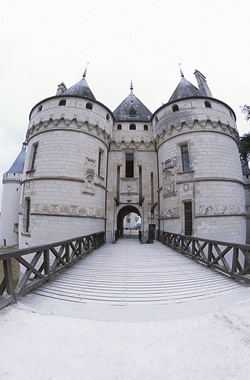Summary
With the materials presented here, along with the PowerPoint presentation and a close reading of Chapter 1 in Vold, Bernard and Snipes' Theoretical Criminology, I hope that you can see the importance of first understanding what theory is all about before diving off into learning about individual theories. Think of the information provided in this lesson as the foundation for all that is to come after it. To reiterate, understand that exploring theory is an undertaking that is separate from ideas about things that cannot be measured or observed. Criminology is the scientific study of crime causation, and through the years, theorists have carefully developed theories and their major building blocks. Theories do not escape close scrutiny, and have been evaluated through empirical testing and their "real world" application. Researchers are cautious, however, even when they find support for one theory or the other to say that "X caused Y." This is because they realize that not every possible cause of crime can be included in even the most sophisticated theoretical and statistical model.
Theorists have moved beyond the early days of the inquisition just as governments have (at least MOST governments have; sadly, others have not). Yet, sometimes lay people, and perhaps some theorists, are more apt to attribute crime to some force that cannot be seen and thus cannot be measured. But in this course, you are "deputized theorists and social scientists" and, as such, are asked to examine human behavior and its causes only through the lenses of science! In the end, try to determine to which school of criminological thought you most closely align (classical, positivism, or radical theory), but hold off on making any decision until your journey through subsequent lessons is complete!
 Wrap-Up Activity: The Drawbridge Exercise
Wrap-Up Activity: The Drawbridge Exercise
Please read the story, then follow the directions below.
THE DRAWBRIDGE EXERCISE As he left for a visit to his outlying districts, the jealous Baron warned his pretty wife: "Do not leave the castle while I am gone, or I will punish you severely when I return!" But as the hours passed, the young Baroness grew lonely, and despite her husband's warning, decided to visit her Lover who lived in the countryside nearby. The castle was located on an island on a wide, fast flowing river, with a drawbridge linking the island and the land at the narrowest point on the river. "Surely my husband will not return before dawn," she thought, and ordered her servants to lower the drawbridge and leave it down until she returned. After spending several pleasant hours with the Lover, the Baroness returned to the drawbridge, only to find it blocked by a Madman wildly waving a long and extremely sharp knife. "Do not attempt to cross this bridge, Baroness, or I will kill you," he raved. Fearing for her life, the Baroness returned to her lover and asked him for help. "Our relationship is only a romantic one," he said, "I will not help." The Baroness then sought out a Boatman on the river, explained her plight to him, and asked him to take her across the river in his boat. "I will do it, but only if you can pay my fee of five Marks." "But I have no money with me!" the Baroness protested. "That is too bad. No money, no ride," the Boatman said flatly. Her fear growing, the Baroness ran crying to the home of a Friend, and after again explaining the situation, begged for enough money to pay the Boatman his fee. "If you had not disobeyed your husband, this would not have happened," the Friend said. "I will give you no money." With dawn approaching and her last resource exhausted, the Baroness returned to the bridge in desperation, attempted to cross to the castle, and was slain by the Madman. |
DIRECTIONS
In the story above, there are six characters. They are (in alphabetical order):
The Baron
The Baroness
The Boatman
The Friend
The Lover
The Madman
- Using the list above, rank the characters (from 1 to 6) in order of their responsibility for the death of Baroness.
- Go to your group discussion space. Share your list on the Lesson 1 Drawbridge Exercise discussion forum, and work with the other members of your group and decide on a group rank order for the six characters.
-
Have one of your group members to post your group decision with the supporting arguments to the Leson 1 Drawbridge Character Rank discussion forum in the Week 01 folder. Make sure to identify your group number.

